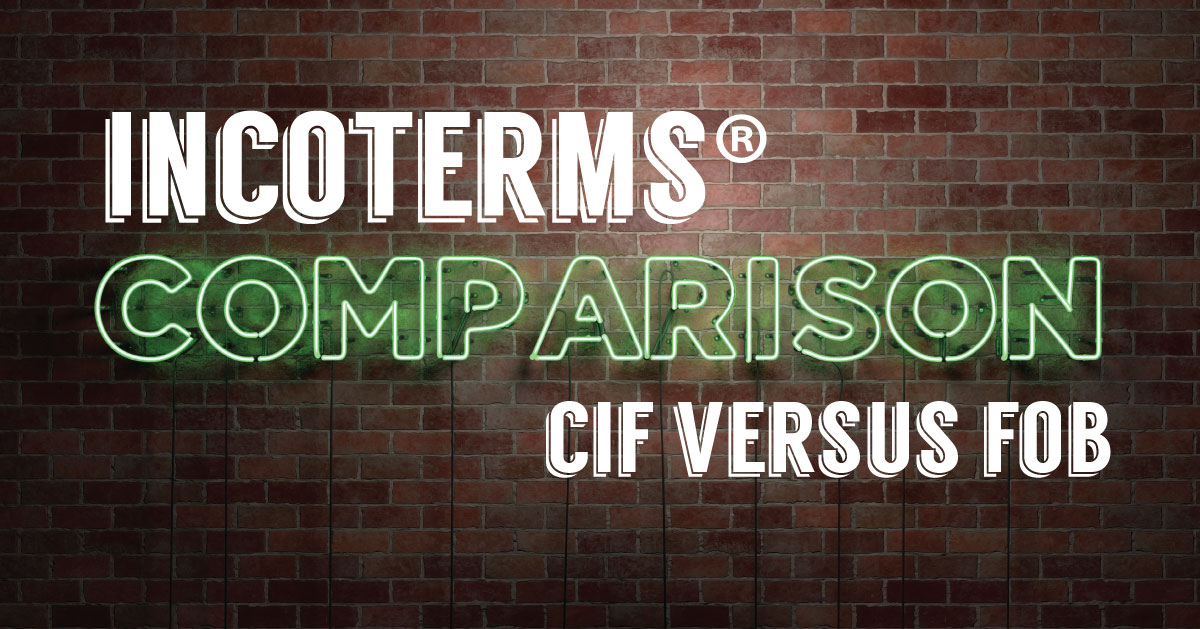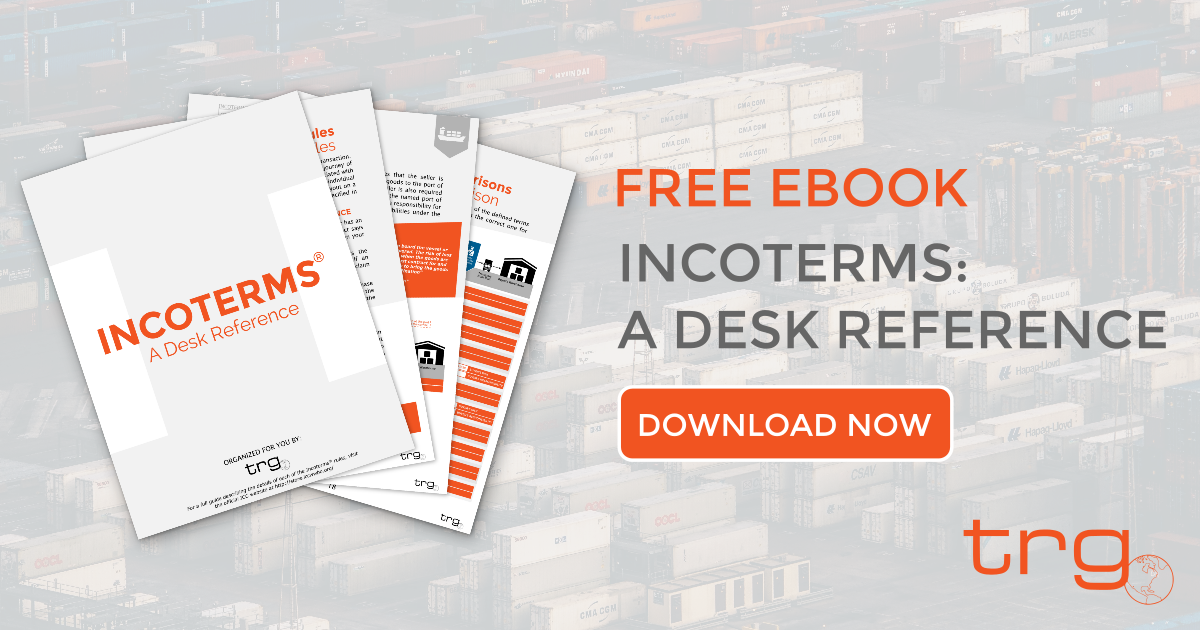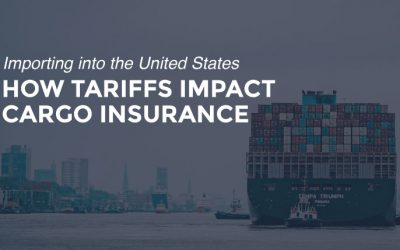Get a better idea of which term is right for your business in this Incoterms® comparison of CIF versus FOB.
While we all understand the importance of knowing the Incoterms® rules used for our business, sometimes it can be difficult to identify which one is the right choice. In this Incoterms® comparison, we are going to compare two of the more popular terms: CIF (Cost, Insurance, Freight) and FOB (Freight on Board). Ultimately we will be comparing overall cost, but also identifying the pros and cons between these two terms along the way.
CIF Versus FOB: Example Comparison
In order to illustrate this Incoterms® comparison, let’s look at a hypothetical situation in which 2 importers are importing the same commodity from the some vendor and shipping them to the same final destination. The only difference between the two will be that one of the importers will be buying his goods on CIF terms and the other will be using FOB. Although this Incoterms® comparison between CIF and FOB is a hypothetical example, the monetary amounts included were gathered by getting real price quotes from reliable sources and taking an average.
The following are the parameters of this example comparison:
- Commodity: LED Flashlights
- HTSUS Code: 8513.10.2000
- Duty Rate: 12.5%
- # of Flashlights per FCL: 432,000
- Origin Port: Ningbo, China
- Destination: Seattle, USA
In the table below you can already see a difference between the two importers and how the difference in Incoterms® rules selected has already begun to affect their order of flashlights. This is particularly noticeable in the cost per unit, marine cargo insurance, and freight contract sections.
| Importer A (FOB) | Importer B (CIF) | |
|---|---|---|
| Incoterms® Rule | Free On Board (FOB) | Cost Insurance Freight (CIF) |
| Cost Per Unit | $1.12/flashlight | $1.13/flashlight |
| # of Shipments Per Year | 3 FCL shipments per year | 3 FCL shipments per year |
| Marine Cargo Insurance | Shipment by shipment insurance, clauses (A) | Insurance contracted by shipper, clauses (C) |
| Freight Contract | Contracts own freight | Shipper contracts freight |
When using CIF, the cost, insurance, and freight are all included in one price. Therefore, the price per unit is typically slightly higher when purchasing on CIF terms, Sometimes this cost difference is as small as a few cents and sometimes it can be a more significant difference. Since the freight is the responsibility of the seller under CIF terms the buyer will not have to contract their own freight. As for marine cargo insurance, CIF requires the seller to purchase insurance for the goods while they are in transit, but it only requires a policy under Cargo Clauses (C) which provides very minimal coverage.
Purchasing under FOB terms, the freight is the responsibility of the buyer so that will have to be contracted separately. The responsibility for marine cargo insurance also falls on the buyer although it is not required. If the buyer elects to purchase a cargo insurance policy, they will be able to purchase more comprehensive coverage and will most likely purchase a policy under Cargo Clauses (A).
CIF Versus FOB: Overall Cost Comparison
Now let’s look at how the over cost between these two terms pans out for each shipment and over the course of a year.
| Cost Per Shipment | Importer A (FOB) | Importer B (CIF) |
|---|---|---|
| Flashlights | $483,840.00 | $488,160.00 |
| Customs Duties | $60,480.00 | $61,020.00 |
| Freight | $2296.75 | No additional charge |
| Marine Cargo Insurance | $1458.41* | No additional charge |
| Total | $548,075.16 | $549,180.00 |
*Per shipment insurance at 0.30/100
We can see in the table above that after calculating the cost per shipment, Importer B (CIF) is paying $1,104.84 more than Importer A (FOB). This is primarily due to two main factors.
- The higher cost per unit when purchasing on CIF terms
Although the increase is cost per unit may seem insignificant at first, once that amount is calculated into the overall cost for the full shipment, it can become significantly more expansive than buying on FOB terms. - The higher valuation in cost of the commodity = more duties paid to Customs upon entry
Since the cost of freight and insurance is included in the cost of the item, Importer B (CIF) will be effectively paying duties on their insurance and fright costs. When calculating the amount of duties owed to Customs, the cost of freight and insurance is typically not included in the calculation at all. However, with CIF, those costs are not able to separate meaning duties will be paid on it all.
So finally, we can look at the annual costs of these shipments for both Importer A (FOB) and Importer B (CIF).
| Importer A (FOB) | Importer B (CIF) | |
|---|---|---|
| Annual Costs | $1,644,225.48 | $1,647,540.00 |
In the totals above, Importer A (FOB) ended up paying $3,314.52 less a year than Importer B (CIF). This annual cost could potentially be even lower for Importer A (FOB) if they purchased an annual Marine Cargo Insurance Policy instead of on a shipment-by-shipment basis.
Incoterms® Comparison: CIF Versus FOB
Although this Incoterms® comparison between CIF and FOB ended up with a relatively conclusive determination, it is important to always consider what is best for you business infrastructure and situation. make sure to get familiar with all of the Incoterms® rules in order to make an informed decision and don’t be afraid to negotiate. Different Incoterms® rules can be used with different vendors so also consider each situation and seller in your decision making process.







